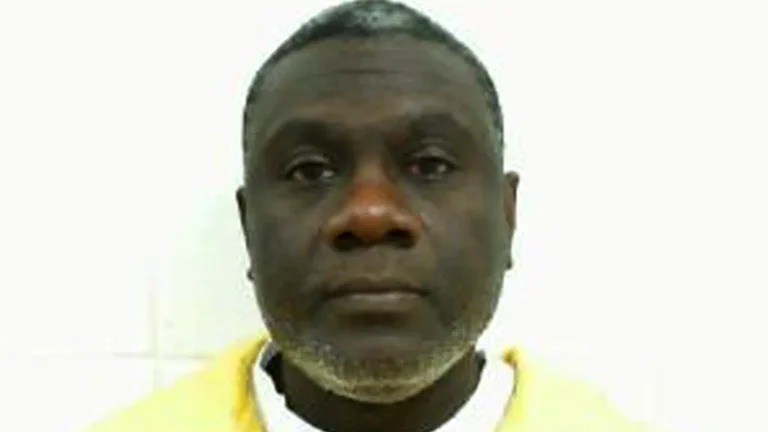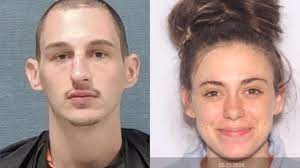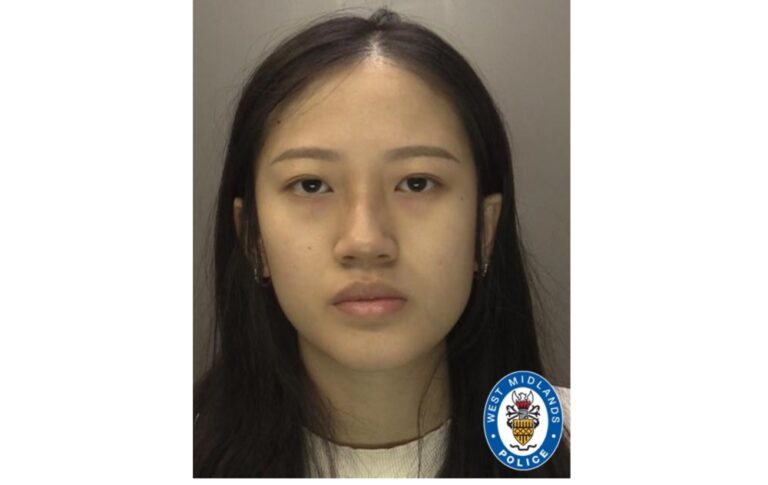Thomas Porter Murders Police Officer In Virginia
Thomas Porter was a man from Virginia when he would murder a police officer and would be sentenced to death
According to court documents Thomas Porter was involved in a loud argument with his girlfriend when Officer Reaves would come to investigate. The two parties would meet in the parking lot and Porter would pull out a gun and fatally shoot the Officer three times
Thomas Porter would be arrested, convicted and sentenced to death however Virginia would end capital punishment in 2021 and Porter would be resentencced to life without parole
Thomas Porter Photos

Thomas Porter FAQ
Where is Thomas Porter Now
Thomas Porter is incarcerated at Red Onion State Prison
When Is Thomas Porter Release Date
Thomas Porter is serving a life sentence
Thomas Porter Case
At approximately 3:30 p.m. on October 28, 2005, Thomas Porter and Reginald Copeland traveled in Porter’s Jeep to the Park Place apartment complex located at 2715 DeBree Avenue in the City of Norfolk to inquire about purchasing marijuana. Porter was carrying a concealed, nine-millimeter Jennings semi-automatic pistol. The two men entered the apartment of Valorie Arrington, where several people were present, including Valorie and her daughters, Latoria and Latifa; Valorie’s cousins, Monica Dickens and April Phillips; Valorie’s sister, Monique Arrington, also known as Monika; and Monique’s daughter, Lamia.
Once inside, Thomas Porter began arguing with the women, brandishing his gun, and threatening that he might shoot one of them if provoked. Copeland left the residence, but Porter remained behind, locking the door so Copeland could not reenter. After being locked out of Valorie’s apartment, Copeland walked away from the apartment complex and happened upon three uniformed police officers a block away, including Norfolk Police Officer Stanley Reaves. Copeland reported Porter’s behavior to Officer Reaves and directed him to Valorie’s apartment.
Officer Reaves drove his police cruiser to the front curb of the apartment building, parked the car, and walked across the grass towards the sidewalk leading from the street to the apartment door. As Officer Reaves approached the apartment, Thomas Porter left Valorie’s apartment and began walking away. Officer Reaves confronted Porter, grabbed Porter’s left arm, and instructed him to take his hands out of his pockets. Porter then drew his concealed weapon from his pocket and fired three times, killing Officer Reaves. Porter took Officer Reaves’ service pistol and then fled in his Jeep.
Several eyewitnesses, along with Porter, testified at trial and provided various descriptions of the events leading up to and immediately following Officer Reaves’ death. Copeland testified that he was standing in a parking lot on the afternoon of Officer Reaves’ death when Porter approached him. They decided to get into a Jeep Grand Cherokee that Porter was driving and go to Valorie’s apartment to purchase marijuana.
Copeland testified that he and Thomas Porter entered Valorie’s apartment because she was Copeland’s friend and because he had smoked marijuana with her before. Once inside, they met Valorie and the other women who informed Copeland and Porter that they did not have any marijuana. The group then talked about various subjects, including a child’s birthday party, but at some point in the conversation Porter began arguing with one of the women.
Copeland “didn’t know what to do” but left the apartment and “ran down [to the next block] and told [Officer Reaves, ‘]Look, there is a man up in the house with some girls, and he shouldn’t be in there.’ ” Copeland described the apartment building to Officer Reaves, and Officer Reaves drove his patrol car to the building with Copeland “running behind” the vehicle. Officer Reaves arrived at the building before Copeland, and as Copeland approached he saw “Officer Reaves in the car and Porter was coming out [of] the building.” Copeland identified Porter to Officer Reaves, and Officer Reaves instructed Copeland to stay back and then approached Porter. Moments later, Porter and Officer Reaves disappeared from Copeland’s viewpoint behind a parked van, but Copeland “heard gunshots and started running,” and he “ran and told the [other] officers what happened.”
Melvin Spruill, Jr., owner of the apartment complex, testified that he was picking up trash in the yard, when he “noticed a police car sitting on the corner” parked directly behind his van. Spruill entered his van and was preparing to leave when he noticed Officer Reaves talking with Thomas Porter. “[O]ut of the corner of [his] eye” Spruill saw Porter’s hands drop down, raise up again with a gun, and then he heard a gunshot. Spruill ducked and “heard another shot ․ [, m]aybe two shots,” and then saw Porter run away. Spruill testified that he never saw Officer Reaves holding a gun, nor did he hear arguing between the two men before Porter shot Officer Reaves.
Simone Coleman testified that she was walking on the sidewalk near the apartment complex when she saw Officer Reaves’ patrol car arrive. Coleman watched as Officer Reaves stepped out of his patrol car, and she saw Porter walking across the grass from the apartment, coming to “within a few feet” of her. She testified that Porter’s hands were “[i]n his pockets” as Coleman passed by, and she “was looking back” to watch the confrontation between Officer Reaves and Porter. Coleman heard Officer Reaves instruct Porter to “take his hands out of his pockets,” and then Officer Reaves “ grabbed Mr. Porter’s left arm.” Coleman testified that Officer Reaves “didn’t have a gun out,” and that Porter, in response to Officer Reaves grabbing his arm, pulled a gun out of his pocket, pointed the gun at Officer Reaves’ head, and pulled the trigger. Coleman watched Officer Reaves collapse to the ground, and she testified that Porter then shot Officer Reaves two more times. Coleman identified Thomas Porter in court as the man who killed Officer Reaves.
Selethia Anderson, who lived across the street from the apartment complex, was sitting on her front porch when she saw Officer Reaves arrive. Anderson testified that she watched Officer Reaves exit his vehicle and walk towards Porter as Porter was leaving the apartment complex. She described how Officer Reaves confronted Porter and “used his right hand to grab [Porter’s] left hand,” and then Thomas Porter immediately reached into his hoodie pocket with his right hand, pulled out a gun, and shot Officer Reaves in the head. Anderson testified that after Officer Reaves fell, Porter shot him twice more “between the back of the head and neck.” According to Anderson, Porter knelt over Officer Reaves’ body after the shooting, and when Porter left the scene, he was carrying a “bigger gun” than the one he had used to shoot Officer Reaves. Anderson identified Porter in court as the man who shot Officer Reaves.
Valorie testified that she was in her apartment that afternoon when Copeland arrived with Thomas Porter. According to Valorie, the two men “came for some marijuana” but the women did not have any, and asked the men to leave. Copeland agreed to leave, but Thomas Porter stayed inside, locked the door and kept Copeland outside. Valorie testified that she felt scared because Porter had “locked us in our own house.” Valorie asked Porter why his hands were in his sweatshirt pocket, and Porter responded by pulling out his gun and asking, “[s]o are you going to give me the bag of weed or what?” Valorie testified that she uttered a prayer, and when Porter realized she was a Muslim, he told the women that they were “lucky” and he put away the gun. When Thomas Porter realized a police car had arrived, he left the apartment and ran “like some horses going down the stairs.” Moments later, Valorie heard gunshots.
Latoria’s testimony confirmed that Porter entered Valorie’s apartment along with Copeland, and that Copeland left the apartment but Thomas Porter remained inside, locking the door. Latoria testified that Porter threatened that he would “get to clapping” if any of the women made a sudden move, and she explained that “clapping” was a term for “shooting.” She testified that she looked out the window, noticed Officer Reaves arrive in his patrol car, and asked, “Why is Reggie [Copeland] talking to the police officer?” Latoria testified that Thomas Porter then immediately exited the apartment, and she watched through the window as Officer Reaves approached Porter, grabbed Porter’s arm, and then Porter “reach[ed] into his right pocket and he pull[ed] out his gun and he shot him.” Latoria testified that Officer Reaves did not have a weapon drawn when Porter shot him.
Dickens’ testimony confirmed Valorie’s and Latoria’s accounts of the confrontation in Valorie’s apartment between Thomas Porter and the women. Dickens testified that Porter threatened to “get to clapping” if any of the women began “talking smack.” Dickens explained that she “was just real afraid right then for my whole family.” Dickens testified that Porter left the apartment immediately when he learned that a police car had arrived, and she went to the window to watch what was happening. Dickens watched Officer Reaves approach Porter, grab Porter’s arm, and then Thomas Porter “put the gun to his head” and shot Officer Reaves.4
Monika also testified that Porter entered Valorie’s apartment with Copeland but stayed inside and locked the door after Copeland left. Monika confirmed that Porter threatened to “get it clapping in here with all y’all” and explained that “ ‘[c]lapping’ means you shoot somebody.” Monika testified that when Porter learned that a police vehicle had arrived outside, he left the apartment immediately and began walking away. Monika testified that she watched out the window as “[t]he police officer grabbed Porter’s arm,” and Porter “pulled the gun out of his pocket and put it to [Officer Reaves’] forehead,” and pulled the trigger. Monika testified that Officer Reaves “never drew his weapon. He got out of his car and walked over to Porter as if he just wanted to talk to him and that was it.”
Robert Vontoure, a Navy seaman who lived across the street from where the shooting occurred, testified that he arrived home from work and noticed a Jeep which he did not recognize parked outside his home. Vontoure explained that he was in his home, “sitting there watching TV and ․ heard gunshots.” Vontoure looked outside the window “and saw a gentleman coming running across our lawn, jump into the Jeep and leave.” Vontoure identified Porter in court as the man who fled the scene in the Jeep vehicle.
After killing Officer Reaves, Porter traveled to New York City where he was apprehended one month later in White Plains, New York. The murder weapon was found in his possession at the time of his arrest. Officer Reaves’ gun was eventually located in Yonkers, New York.
The autopsy report revealed that Officer Reaves suffered three close-range wounds to his head: one to the forehead, one to the left back of the head, and a flesh wound near the right ear. “The cause of death was two separate close range gunshot wounds to the head.”
Thomas Porter did not dispute that he shot Officer Reaves, but his version of the events differed from that of the eyewitnesses. Porter testified in his own defense that he drove to Valorie’s apartment with Copeland “[t]o get a bag of marijuana” because Copeland was his “means of getting marijuana.” Porter parked the vehicle outside the apartment, and he “grabbed the gun out of the glove compartment box” before leaving the vehicle “[b]ecause the area ․ is a bad area.” Porter testified that he gave Copeland $10 to purchase marijuana, and that he waited outside while Copeland went inside to make the purchase.
Thomas Porter testified that after a few minutes had passed, Copeland emerged from an upstairs apartment and invited him inside. Porter confirmed that Copeland left the apartment, but Porter denied locking the door and keeping Copeland outside. Porter also denied brandishing his gun inside the apartment or making a statement about shooting any of the women. Thomas Porter claimed that he left the apartment when he learned from the women that Copeland had not paid them for marijuana, and he denied that any of the women knew about Officer Reaves’ arrival because “[w]asn’t nobody even looking out the window.”
Thomas Porter testified that he left the apartment and was walking to his vehicle “when Officer Reaves stepped in front of me and grabbed me.” Thomas Porter and his counsel then had the following exchange:
Q. Did anything else happen when he did that?
A. Yes. I seen him pulling his gun.
Q. What do you mean, you saw him pulling his gun?
A. Well, when he grabbed me with his left arm on my left arm, we were still standing face to face. I seen him pulling his gun. That’s when I put my hands up in the air and backed up, looking at him, like, “What [are] you doing?”
Q. You just described that you put your hands up in the air?
A. Yes.
Q. And at that point, what happened?
A. Well, I got my hands in the air when he finally gets the gun out and point it at me. I take my hands down and pull my gun and started shooting.
Q. Why did you do that, Mr. Porter?
A. Because I was scared. I thought he was going to kill me because he looked angry at the time, so I was just worried for my safety.
Porter testified on direct examination that he could not remember how many times he pulled the trigger, but after he shot Officer Reaves, he bent down, picked up Officer Reaves’ gun and ran. Porter explained that he left the scene because he “was scared” because he realized he “just killed an officer.”
Porter testified repeatedly on cross-examination that he “never wanted to kill anybody” but he also admitted that he “pulled out the gun” and “shot [Officer Reaves] in the forehead.” Porter and opposing counsel had this exchange on cross-examination:
Q. You meant to hit Stanley Reaves with a bullet, didn’t you?
A. Yes, sir.
Q. All right. And you took aim-therefore, you took aim at him, correct?
A. Yes, sir.
Q. You took aim at a part of his body, correct?
A. Yes, sir.
Q. And the part of his body that you took aim at and then before pulling the trigger from less than six inches away was directly into his forehead, correct?
A. Yes, sir.
․
Q. And you agree that you knew you were aiming at his head, correct?
A. Yes, sir.
Porter also had this exchange on cross-examination:
Q. You admit that you ․ pulled your gun out?
A. Yes, sir.
Q. And that you shot him in the head?
A. Yes, sir.
Q. You admit that you stole his gun?
A. Yes, sir.
Q. So according to your version of events, you claim that Officer Reaves pulled his gun, correct?
A. Yes.
Q. And the only thing about the crime that’s alleged you committed, the capital murder of Officer Stanley Reaves, using a gun to commit that murder and stealing Officer Reaves’ gun, the only part of the crime that we’re here that you’re on trial for that you dispute, really, is the reason why you shot Officer Reaves; is that correct?
A. Yes.
https://caselaw.findlaw.com/court/va-supreme-court/1365512.html














